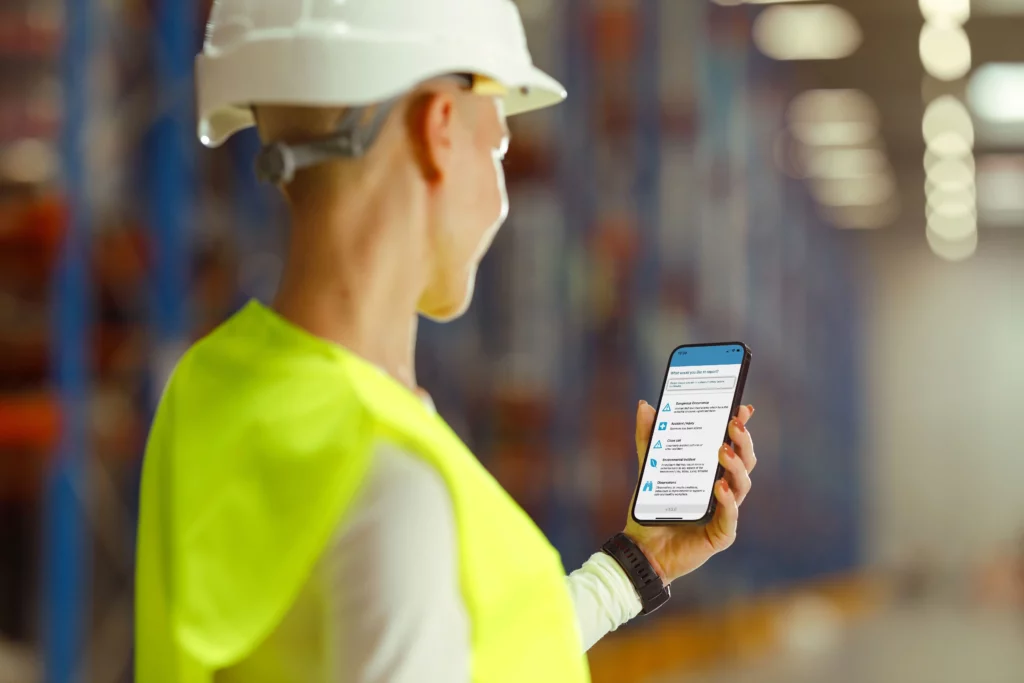Creating and maintaining a positive health and safety culture can be a challenge for any organisation. Engaging your employees in the creation, delivery and evolution of your health and safety practices is key to ensuring a safe, happy and productive workplace.
Everyone in your organisation has the right to work in a safe environment. At the same time, everyone also has a responsibility to engage in good health and safety practices. When your employees feel like they all share in this responsibility, you’ll be on your way to creating a happier, healthier and ultimately safer workplace.
Ensuring a high level of employee engagement can be challenging, however. Your organisation’s health and safety procedures may look easy to action on paper, but what counts is that your employees feel empowered to stop activities if they identify potential risks, and can deal with real incidents confidently. In this article, we’ll look at some different ways you can engage your employees and create a robust shared culture around good health and safety practices at work.
What is employee engagement?
Establishing and maintaining employee engagement is one of the most sought-after workplace solutions by CEOs and industry leaders. From ping-pong tables in the office, to ‘Fizz Fridays’ and flexible working, companies have pulled out all the stops in an attempt to capture their employees’ commitment to their workplace. While some of these ploys and plans have succeeded in upping employee retention, it’s clear that there is still some work to do when it comes to boosting employee engagement.
According to Gallup, just 34% of US employees said they were engaged in their workplace. What makes tackling this statistic even more challenging is the fact that there is no one definition of what employee engagement actually looks like. Definitions cover a range of indicators that employers could use to measure employee engagement, from energy and effort to enthusiasm and pride. What most of these definitions share is the idea that engagement is about the combination of employees’ psychological, emotional and physical reactions to their work. It’s a state that goes beyond employees feeling ‘satisfied’ or simply ‘happy’ in their jobs.
Engaged employees care about their place of work and want to contribute to their organisation’s overall goals. Ensuring strong levels of employee engagement is about nurturing team players, not just individual high-flyers.
Your engaged employees might be the ones who go above and beyond in their roles without being asked. They are always looking for ways to develop and grow their role. They understand their impact and how they make a difference in the company. They value the training they receive or enjoy the trust they have with a supportive, collaborative team. Maybe their boss is a great communicator who regularly provides opportunities for feedback and suggestions. It’s easy to see why this employee is engaged in their role.
These same behaviours and habits will apply to an employee who is engaged in their workplace health and safety too. They will be more likely to report a near-miss or proactively identify potential hazards – both of which can generate learning and help prevent accidents. Crucially, they will be able to work in a way that best protects themselves, their colleagues and the wider workplace. Safety is not just a tick-box exercise to them, they genuinely care, and understand the importance of preserving a safe working environment.
Why is it important to engage employees in health and safety?
For senior leaders, the health and safety of their employees should be a top priority. Engaging your employees in developing and delivering your health and safety policies not only makes for a safer workplace, but research also shows that it can increase productivity and customer satisfaction – as well as company profit.
According to the Health and Safety Executive, accidents are less likely to occur in workplaces where employees actively uphold good health and safety practices. They are also more likely to report hazards and the most common risks like slips and trips, so they can be better controlled. Engaged employees have a better awareness of risks in general and are more likely to feed back their findings to senior leaders, again contributing to the wider safety of their workplace.
With around one fifth of UK employees saying they often feel exhausted or under excessive pressure at work, creating the conditions for a more engaged workforce can have an important impact on employees’ overall happiness. Feeling more engaged at work leads to a more positive and proactive attitude, better relationships with colleagues and can result in better pay or promotion.
From a business perspective, maintaining a strong health and safety culture has several benefits. From fewer working days lost due to workplace-related sickness and injury, to lower insurance costs, increased efficiency and in turn greater productivity. It’s clear that high employee engagement has a positive impact, not only on individuals but wider company goals and objectives.
How to effectively engage employees with safety in your workplace
We have established that engaging your employees is important to maintaining good health and safety practices across your company. So how can you kick-start and sustain that engagement across your organisation? Here are four actions you can take to develop and improve employee engagement with health and safety in your workplace.
1. Make sure your employees understand their responsibilities
You wouldn’t expect your employees to carry out their work without a clear understanding of the responsibilities of their role. The same applies to the responsibilities employees have when it comes to workplace health and safety.
Clear job descriptions are important and should also include details of how each role contributes to the overall health and safety of the company. Teams should have clear reporting structures in place and employees should feel confident about who they should report hazards or incidents to and how they go about it. Ensuring everyone has a good understanding of who is responsible for what in every area of your organisation is foundational when it comes to health and safety in your workplace.
Developing this understanding requires regular action. Just as your company might have an Equality, Diversity and Inclusion committee or an Environmental steering group, consider the impact of having a cross-departmental team dedicated to Health and Safety.
Think carefully about who makes up this team, too. While ultimate responsibility may lie with you, your senior management or board members, employees at all levels of your organisation have a stake in maintaining good health and safety practices. This should be reflected in your committees and it helps ensure information and learning is more widely shared across the organisation.
2. Give your employees the correct training and support
One of the best ways to enhance employee engagement is by providing regular training opportunities that build skills and knowledge across your teams. Employees who receive high-quality training that is relevant to their role can carry out their tasks more safely and effectively.
When organising health and safety training for your employees, you should consider the different styles of training and learning that can be deployed. On a day-to-day basis, training might look like demonstrating how to use a piece of equipment safely and then giving employees the chance to practice using it themselves. Training can also include group activities, hazard spotting, online quizzes or working with other teams to share learning. The key is to make sure your training has an interactive element. If employees have the chance to get hands-on and practice what they are learning, they are more likely to retain that knowledge and gain confidence in their skills.
Training around health and safety should be considered as a normal and important part of employee development. By offering regular and up-to-date training opportunities, you can build trust and confidence between your employees and management. Employees will see that managers are invested in their development and safety at work. At the same time, managers can learn more about where there are gaps in their team’s knowledge and organise training appropriately.
3. Lead by example when it comes to health and safety
Your employees are more likely to stay engaged in good health and safety practices if they see that behaviour being demonstrated by company leaders. When management is actively engaged in good health and safety habits like prompt reporting, regular training and shared learning, employees will feel motivated to do the same.
A recent case study of supermarket Sainsbury’s health and safety practices identified a need for more direct involvement from management and the board. Following an external audit and suggestions for a ‘radical revision’ of senior leaders’ approach to workplace safety practices, Sainsbury’s transformed their overall employee engagement. Not only did the company see a significant fall in both employee absence and reportable incidents, the board became role models for good health and safety practices. This resulted in overall ‘improved morale and pride in working for the company’.
4. Make it easy to report near misses, incidents and accidents
Once your employees know when and who they should be reporting incidents to, your next responsibility as an employer is to make it easy for them to do so. Your employees are often the best placed people to understand the risks in their workplace. If they don’t feel confident or capable when it comes to reporting a near-miss or suggesting improvements, you may see engagement fall away.
Streamlining your processes with effective and intuitive incident reporting software is one way you can make it easier for your employees to engage with health and safety. Speciality chemicals manufacturer Cornelius found that their staff were being put off from engaging in health and safety initiatives in part due to their time-consuming reporting process that relied on manual data entry. When they switched to Notify’s digital reporting software and user-friendly app, they found that employee engagement steadily increased. When employees had an easier, accessible way to engage with workplace safety, Cornelius saw that the number of reported near-miss incidents increased. A streamlined reporting process for employees created more opportunities to learn and now helps prevent future accidents.
After setting out responsibilities and organising training, make sure there are clear channels for communication around health and safety that your employees can use. The best way to do this is to ask them what they need from you. Are there gaps in their knowledge around a certain process? Maybe someone has a suggestion on improving the language or terminology used that could make things clearer. Follow up on these conversations with any necessary changes and make a point to regularly check in with your teams about their health and safety practices.
How Notify’s technology can help boost your employee engagement 10x
We know that it’s no longer enough to simply put together a health and safety policy that your employees only look at during their induction or when they have to record an incident at work. Ongoing engagement with safety in your workplace is key to the health of your employees, your customers and your company as a whole.
Maintaining that engagement is easy with Notify’s incident management and reporting software. Our native mobile app allows your employees to report near misses, positive observations, and accidents/injuries in real-time, from any location. They can upload images, and add location details, giving you valuable data to pinpoint problematic sites/areas for focused improvement initiatives.
With our feedback to reporter functionality, you can keep your employees updated so they can see that their valuable safety report has been actioned or investigated. By closing that feedback loop, your employees will feel that their input is valued and is being taken seriously. It will also reinforce the fact that they are making a positive contribution to ensuring the safety of everyone within their workplace.
With our software, health and safety data can be shared quickly and easily between your employees, teams and board. By sharing key metrics such as a reduction in the accident frequency rate or a declining number of lost time incidents, employees will feel more motivated and committed to your health and safety policies
To find out more about how Notify can better engage your people with their workplace health and safety, book a free demonstration today.



